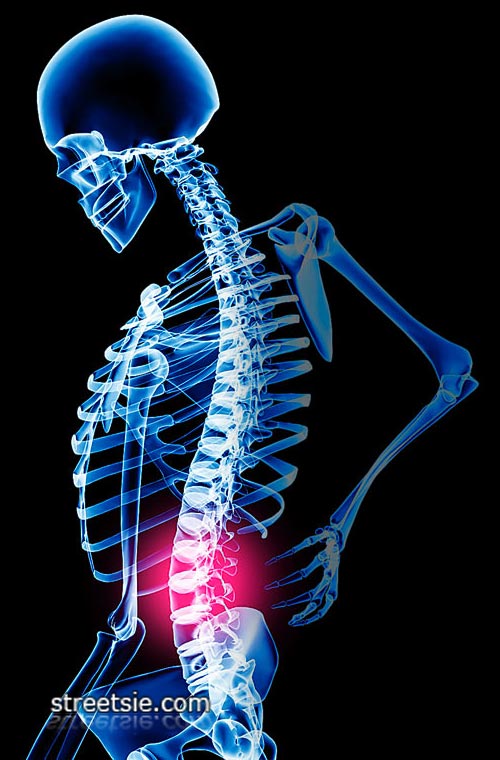Partial Spinal Cord Injury And Syndromes
Neurological symptoms don’t always follow a classic pattern or demonstrate a clear neurological level. For this reason, spinal cord injuries are sometimes misdiagnosed and become attributed to hysterical or conversion paralysis. Neurological symptoms indicating spinal cord injury and spinal cord syndromes should never be dismissed until spinal cord injury has been proven to not exist by means of thorough examinations and appropriate clinical investigations.
When a spinal cord injury has been confirmed through comprehensive primary and secondary hospital examinations a clinical diagnosis of spinal cord injury can be made. The diagnosis comprises of a level, completeness, and is often attributed to a type of syndrome, before a prognosis of expected long term outcomes is delivered. Given any spinal cord injury syndrome where lesions display as complete from the outset, recovery is far less likely than for incomplete lesions.

Most spinal cord injury syndromes are considered a rare disease by the United States National Institute of Health as the incidence rates for each number less than 200,000 people in the American population. In total approximately 250,000 Americans are living with some form of SCI.
At an incidence rate of 10,000/year many are classed under a syndrome. And while we do offer detailed statistics throughout this website it is important to remember spinal cord injury is about people’s lives not numbers or expectation. A full life is lived when you make the most of what you have got, not what you have lost. Where there is life there is hope and where there is a wheel there is a way.
Anterior Cord Syndrome
Damage to the anterior (front) of the spinal cord is usually caused by a compression fracture, or by a flexion-rotation force on the spine producing an anterior dislocation. There is often anterior spinal artery compression so that the corticospinal (between spinal cord and brain cortex) and spinothalamic (between spinal cord and thalamus) tracts are damaged by a combination of direct trauma and inadequate blood flow. This results in loss of power as well as reduced pain and temperature sensation below the lesion.
Brown Sequard Syndrome
The signs of Brown-Sequard syndrome are hemisection (cutting) of the spinal cord resulting from stab injuries but also common in lateral mass fractures of the vertebrae. Power is reduced or absent but pain and temperature sensation are relatively normal on the side of the injury because the spinothalamic tract crosses over to the opposite side of the cord. The uninjured side therefore has good power but reduced or absent sensation to pin prick and temperature.
Central Cord Syndrome
The most common spinal cord syndrome, an incomplete spinal cord injury is also known as, “inverse paraplegia” because the hands and arms are paralyzed while the legs and lower extremities work correctly. Typically seen in older patients with cervical spondylosis central cord syndrome is a hyperextension injury often from relatively minor trauma to the cervical regions of the spinal cord. The more centrally situated cervical tracts supplying the arms suffer the brunt of the injury resulting in a flaccid (lower motor neurone) weakness of the arms and relatively strong but spastic (upper motor neurone) leg function. Sacral sensation and bladder and bowel function are often partial. The ability to walk is regained in most cases with some residual disability.
Conus Medullaris Syndrome
Resulting from injury to the tip of the spinal cord, located at vertebra L1 the effect of injury to the sacral cord (conus medullaris) and lumbar nerve roots is usually loss of bladder, bowel and lower limb reflexes. Lesions high in the conus may occasionally represent upper motor neurone defects and function may then be preserved in the sacral reflexes, for example the bulbospongiosus and micturition reflexes.
Posterior Cord Syndrome
This syndrome is most commonly seen in hyperextension injuries with fractures of the posterior (rear) elements of the vertebrae. Contusion of the posterior columns may cause the patient to have good power, pain and temperature sensations, but poor perception of movement and spatial orientation, making walking very difficult.
Tethered Spinal Cord Syndrome
Tethered spinal cord syndrome (also known as occult spinal dysraphism) is a condition arising from an abnormally stretched spinal cord. The sensory and motor symptoms of lower back pain and leg weakness can usually be relieved by surgery that may involve the cutting of spinal cord nerve roots. Tethered spinal cord damage affecting bowel or bladder function however is typically non-treatable and permanent.
Conclusion
Spinal cord injuries resulting in paraplegia and quadriplegia (tetraplegia) are permanent debilitating conditions of paralysis involving much more than loss of limb function and sensation. Thorough primary and secondary hospital examinations are essential in forming an accurate early diagnosis and long term prognosis of spinal cord injury classification and outcomes.
Given the same neurological examination and findings, neurologists and physiatrists may not assign the same spinal cord injury level. For example, a patient with fractured C5 vertebrae who has normal C4 sensation and absent C5, a physiatrist may call a C4 level injury whereas a neurologist or neurosurgeon may call it C5. Most orthopedic surgeons will refer to the bony level of injury C5 as the level of injury.
Outside of clinical environments it matters little if C4 or C5. Both require use of a wheelchair for life. Many of the rights and opportunities afforded to able-bodied people are not afforded to wheelchair users with spinal cord injury.
Resources
- SCI Info Pages; http://www.sci-info-pages.com
- SCI Recovery; http://www.sci-recovery.org
- Wrong Diagnosis; http://www.wrongdiagnosis.com/t/tethered_spinal_cord_syndrome/intro.htm
Kind Regards
Graham Streets
I am a partial para since ’88. I am having some fairly serious bowel trouble and am considering a procedure called an appendicocecostomy and would welcome comments from anyone who has had the procedure.